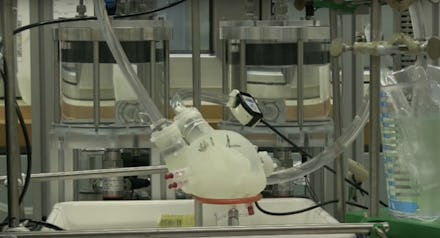Scientists made and tested a new artificial heart, and it could change lives

We’ve heard of scientists growing organs in petri dishes. But now, a group of Swiss researchers are taking an alternative route: combining 3-D printing and soft robotics to develop a prosthetic heart.
The heart is squishy, flexible and able to pump actual liquids from its chambers, which is important since the heart is responsible for pumping our blood. And considering that doctors have performed at least 67,000 heart transplants since 1988, there’s a great chance that people will want to use this invention in the future. In the United States, more than 4,000 people are on the waiting list to get a heart transplant.
“As a mechanical engineer, I would never have thought that I would ever hold a soft heart in my hands,” Anastasios Petrou, a doctoral student at the Product Development Group Zurich, said in a release. “I’m now so fascinated by this research that I would very much like to continue working on the development of artificial hearts.”
Scientists have wanted to make fake hearts for a long time, but previously struggled with materials — metal and plastic parts, for example, could harm blood or have a hard time integrating with human tissue. This heart, however, is made of silicon, a material that is often used for prosthetic body parts.
Here’s the catch: Researchers still have more work to do before they can really incorporate this heart into human bodies. Right now, it only lasts for about 3,000 beats, which amounts to less than an hour.
“This was simply a feasibility test,” Nicholas Cohrs, a doctoral student and part of the study, said in the release. “Our goal was not to present a heart ready for implantation, but to think about a new direction for the development of artificial hearts.”